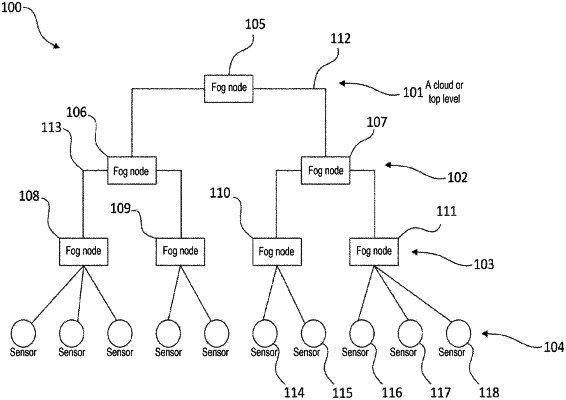| CPC G06F 9/5072 (2013.01) [G06F 18/214 (2023.01); G06N 3/044 (2023.01); G06N 3/045 (2023.01); G06N 3/063 (2013.01); G06N 3/08 (2013.01); H04L 67/1089 (2013.01); H04L 67/125 (2013.01)] | 20 Claims |

|
1. A fog computing system comprising a plurality of fog nodes including edge nodes at an edge or bottom level, and middle nodes at one or more middle levels intermediating between the edge nodes and a cloud node at a cloud or top level, wherein
the cloud and middle nodes are non-bottom level nodes, the middle and edge nodes are non-top level nodes, and said non-bottom and non-top nodes form a hierarchical structure with each of the non-bottom nodes having children nodes at a next lower level, and each of the non-top nodes having a parent node at a next higher level; wherein
each of the edge nodes is configured to perform the following functions: receiving sensor data produced by sensors, assigning a reception timestamp to each of said sensor data indicating a time of receipt to produce a corresponding series of timestamp-ordered sensor data, training a first local model through a machine learning based on said series of timestamp-ordered sensor data, and sending said series of timestamp-ordered sensor data to the parent node of the edge node; wherein
each of the middle nodes is configured to perform the following functions: collecting a series of timestamp-ordered sensor data from the children nodes of the middle node to obtain a collected series of timestamp-ordered sensor data, training a first supra-local model through the machine learning based on the collected series of timestamp-ordered sensor data, and sending the collected series of timestamp-ordered sensor data to the parent node of the middle node.
|